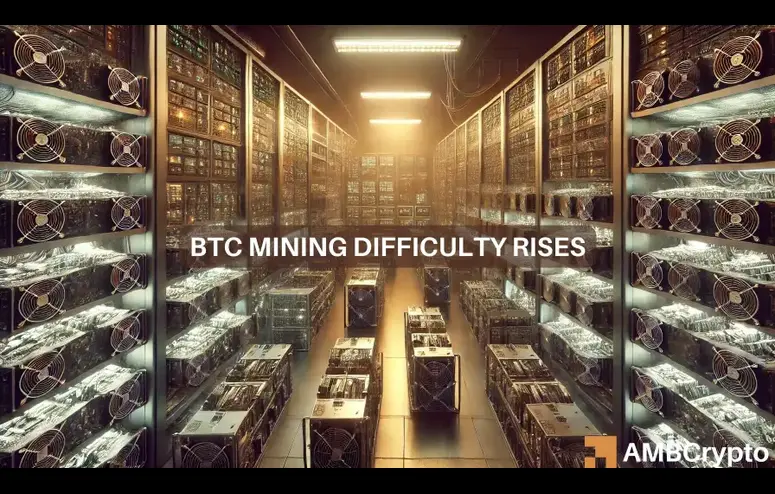Bitcoin mining difficulty hits ATH: Here's how it could impact BTC prices

Bitcoin’s mining difficulty has reached an all-time high due to a surge in the network. BTC has remained above the $67,000 price range.
Bitcoin [BTC] mining difficulty has reached a record high, driven by a surge in the network’s hashrate. This increase occurs as Bitcoin’s price rises, prompting miners to expand their operations to capitalize on the potential rewards. The higher mining difficulty is a reflection of the network’s growing security, but also presents challenges for miners as they face rising costs. Rising hashrate signals Bitcoin mining difficulty Throughout 2024, Bitcoin’s hashrate has been steadily increasing. As of mid-October, it reached a peak of 656.3 billion, indicating heightened mining activity on the network.
A higher hashrate means more miners are joining the Bitcoin network, competing for blocks.
Source: CryptoQuant
The primary motivation for miners is BTC’s ongoing price rally, which has encouraged them to ramp up their computational power. With BTC trading at around $67,193, the incentive to secure new blocks has grown. However, this has also led to an automatic adjustment in the network’s mining difficulty. Bitcoin mining difficulty reaches new heights Bitcoin mining difficulty has climbed to its highest level ever following the surge in hashrate. The network automatically adjusts mining difficulty every two weeks to ensure blocks are mined approximately every 10 minutes. As more miners join the network, competition intensifies, increasing difficulty and the costs associated with mining.
Source: Glassnode
For miners, this rise in difficulty means they need more computational power and higher energy costs to maintain profitability. While BTC’s rising price provides potential rewards, it also raises the cost of securing those rewards, squeezing profit margins for many miners. Miner fees see slight uptick, while Bitcoin price holds steady Alongside the rise in the Bitcoin mining difficulty and hashrate, miner fees have shown a moderate increase. Fees typically rise when there’s a surge in network activity, with miners prioritizing transactions that offer higher rewards. Although miner fees have spiked during network congestion in 2024, block rewards continue to account for the bulk of miners’ income.
Source: Glassnode
Despite these network adjustments, Bitcoin’s price has remained relatively stable, currently trading at $67,193, down by 0.28%.
Read Bitcoin (BTC) Price Prediction 2024-25
The Average True Range (ATR) indicator points to potential volatility in the short term, suggesting that BTC’s price could see fluctuations as the mining ecosystem adjusts to the increased difficulty and network activity. As Bitcoin mining difficulty and hashrate continue to climb, the interplay between miner profitability, fees, and BTC’s price will be essential to monitor.
Take a Survey: Chance to Win $500 USDT
Next: Bitcoin: Why a dip to $66k might be necessary for BTC’s next move
Share
Share
Tweet
